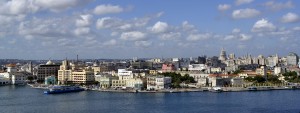Musical Magic happens in Cuba
Cuba is the largest island in the Caribbean and, with over 11 million inhabitants, the second-most populous after Hispaniola. It is a multiethnic country whose people,culture and customs derive from diverse origins, including the aboriginal Taíno and Ciboney peoples,
Cuba is ranked very high for human development by the United Nations, and high for health and education.[19][20][21] In 2015, it became the first country to eradicate mother-to-child transmission of HIV and syphilis, a milestone hailed by the World Health Organization as “one of the greatest public health achievements possible
Tourism
Tourism was initially restricted to enclave resorts where tourists would be segregated from Cuban society, referred to as “enclave tourism” and “tourism apartheid”.[200]Contacts between foreign visitors and ordinary Cubans were de facto illegal between 1992 and 1997.[201] The rapid growth of tourism during the Special Period had widespread social and economic repercussions in Cuba, and led to speculation about the emergence of a two-tier economy.[202]
Cuba has tripled its market share of Caribbean tourism in the last decade;[when?] as a result of significant investment in tourism infrastructure, this growth rate is predicted to continue.[203] 1.9 million tourists visited Cuba in 2003, predominantly from Canada and the European Union, generating revenue of $2.1 billion.[204] Cuba recorded 2,688,000 international tourists in 2011, the third-highest figure in the Caribbean (behind the Dominican Republic and Puerto Rico).[205]
From Wikipedia, the free encyclopedia




